Funding
Commissioning Report
Analysis of Applications to and Decisions of Rights for Time’s Small Grants Funding Call
Analysis of Applications to and Decisions of Rights for Time’s Small Grants Funding Call

Rights for Time is a global network of academic researchers, policy makers, community groups, activists, artists, Non-Governmental Organisations and Civil Society Organisations committed to shifting the discourse and practice of humanitarian protection by exploring how time conditions war, displacement, and violence. We are funded by the UK Arts and Humanities Research Council (AHRC) Global Challenges Research Fund as a Network+, which means the network has the ability to grow and take on new partners through small grants.
Rights for Time’s mandate is to create an evidence base that illustrates how long-times of violence and trauma cannot be accounted for in existing models of humanitarian protection work, and that further the implementation of existing models can not only hinder protection but reproduce harm. It is undeniable that this concept, and alternative definitions that explain harm as taking shape over the longue durée, is difficult to understand. It is also difficult to understand how existing ‘crisis time’ approaches negatively affect human rights policy and practice. In order to help advance this concept, Rights for Time has called for expanded research in the Global South.
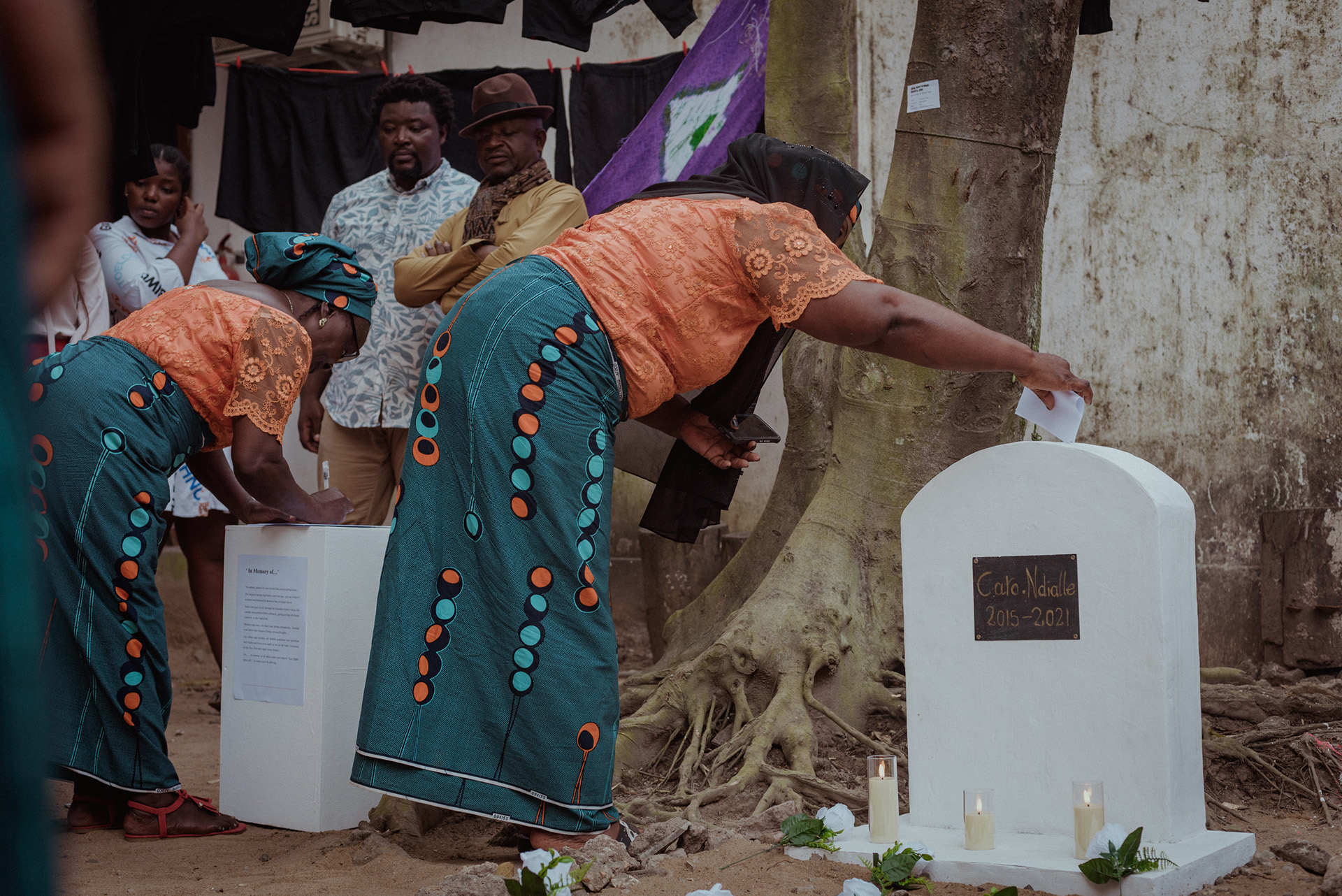
To this end, the network launched a small grants call for projects up to £25,000 in July 2022, open to applicants based in countries on the Organisation for Economic Cooperation and Development’s (OECD) Development Assistance Committee (DAC) list. Distributing a large portion of its funds in DAC-list countries is a condition of the award of the Rights for Time grant. The call invited projects that set out to re-think current approaches to ‘protection’ in one or more low-and middle-income countries to apply (funding call here) and encouraged applicants to consider the role of time in their work.
Since Rights for Time operates as a multilingual network and has several projects in the Middle East, the funding call ran in Arabic and English. Information sessions offering support in completing the application for the call were held in both languages and recorded. The closing date for submissions was the 15th of September 2022 and awardees were notified of the outcome of the funding call within six to eight weeks.

A total of 23 applications were submitted to the call from project teams based in a total of ten countries [see Figure 1], with 22 applications received in English, one in Arabic. The total budget for the call was £250,000, with a maximum allowed amount of £25k per application. As each successful applicant put in a bid for the full amount, a total of 10 projects were funded. These projects are based in eight countries: Cameroon, Iraq, Kenya, Pakistan, Palestine (x3), Rwanda, and Uganda (x2) [see Figure 2]. A broad range of projects spanning a large range of topics and methodologies were supported, from a participatory film learning project exploring children born of war in Uganda to a community awareness and trauma intervention project in Pakistan. The projects were selected via a thorough review process by external reviewers and the Rights for Time leadership team, which is described below.
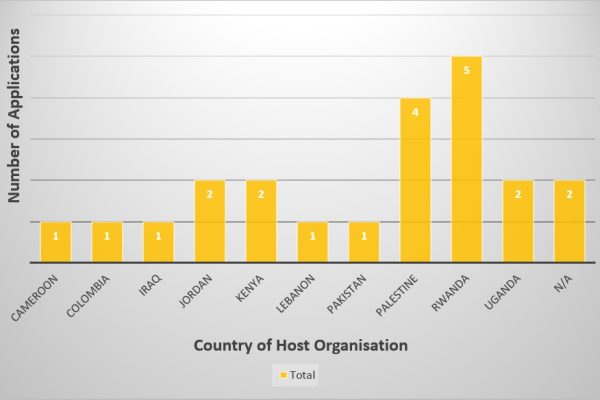
As a first step in the review process, the network’s senior administrator checked all applications for eligibility, ensuring that all required documentation was complete, including early documentation indicating awareness of the University of Birmingham’s due diligence checks that would be required of all funded projects, as well as checks on the budgetary information and OECD DAC-list country checks. 18 applications were complete at this eligibility check stage and five were missing required documents. We operated a ‘supportive eligibility check’, writing to applicants with incomplete applications to explain what was missing and request its return within one week. All projects, except three were able to return the missing documentation. Of the funded projects, none had initially submitted applications that required support at the eligibility check stage.
All proposals were reviewed by two people (investigators on the Rights for Time project and external early career academic evaluators) and scored against a set of criteria published alongside the call. Reviewers attended a training session dedicated to the assessment and were provided with written guidelines for the evaluation. These guidelines followed detailed consideration of best practice in the sector, in sister networks, and the requirements of the UK Research Councils. The review forms employed Likert-type scales against which readers were asked to rate projects. Eight scales were used, assessing: a) the project’s contribution to the network’s themes and principles, b) creativity and originality, c) the extent to which the project team’s expertise and skills were sufficient to carry out the work, d) the project team’s approach and ethics, e) management and feasibility of the project, f) potential for impact and outcomes, and g) ethical budgeting. The scales were converted into numbers and a total calculated across all categories, the highest rating being 42; a rating that indicates excellence on all seven scales. In addition to these scores, reviewers provided an overall assessment indicative of their qualitative judgement. Finally, each reader was asked to provide comments that would later be sent to applicants, explaining their scores and overall impressions of the work. These comments were not intended to be comprehensive nor unduly critical, but rather note the main areas of strength and weakness.
All projects were discussed by a grant assessment panel that made final decisions based on reviewer scores, the geographic, thematic, and methodological spread of projects, and their alignment with the network’s themes and foundational principles. The panel was chaired by one of Rights for Time’s investigators and took place in a hybrid format (on Zoom and in person). Since the call promoted and solicited applications from network members, conflicts of interest were anticipated. Panel members who had worked with one of the applicant parties in the last five years or provided feedback on the application prior to its submission were considered ineligible to review and recused themself from the panel. Given the breadth of the Network and the multidisciplinary nature of the research, there was a diverse range of applications. As such, reviewers’ level of competence in the areas they judged the projects on were discussed during the panel session when evaluations differed between two reviewers.
Through this process, the network’s leadership awarded funding to ten projects. Reserve candidates were identified in case higher ranked applications did not pass due diligence checks.
We would like to congratulate the projects who secured funding and look forward to them joining us in exploring and advancing approaches to humanitarian protection.
The awardees’ project titles and organisations are:
Diversity and Equality Analysis of Applications and Funded Projects
Rights for Time wishes to amplify domestic actors in global debates on humanitarian protection and challenges the impact of Global North based decision-making on local communities in Global South countries. This also means acknowledging the challenging nature of funding models that are tailored towards and advantageous for Global North based institutions and researchers. Research needs diverse perspectives; yet, as examples, there is an underrepresentation of women in leadership positions, people of colour, queer researchers, those with disabilities or caring responsibilities. We want to make sure that despite operating within global power dynamics, Rights for Time does not wish to reinforce such power imbalances but rather to respect the leadership of local entities and do its best to disrupt colonial patterns.
In line with the network’s values and commitment to equality, diversity, and inclusion we collected information from all team members listed on the application form related to demographics relevant to their professional role. Applicants could opt-out of some or all of the information collection. In order to improve our understanding of these data and where inequalities arise in the research landscape, we have analysed application patterns. Applicants were asked to provide information on six aspects using a combination of tick boxes and free-text responses: career stage, gender, member of a racialized or minoritized group in your local context, declared disability, caring responsibility. Most projects provided the requested information.

Projects that applied had between one and eleven team members (3.5 on average). Projects that were awarded funding had slightly larger teams with 4.1 team members on average. We asked applicants to select whether they identified as early in their development as a researcher or as a senior/established researcher. With regards to project leads, a total of 11 identified as early career researchers while nine described themselves as senior or established researchers; three did not specify their level of seniority. Of the funded projects, five principal investigators identified as early career researchers, three as senior or established researchers and two did not specify their status. Therefore, the funding call does not seem to have favoured senior or established researchers in its application or selection process, with both applications and funded projects spread evenly across career stages.
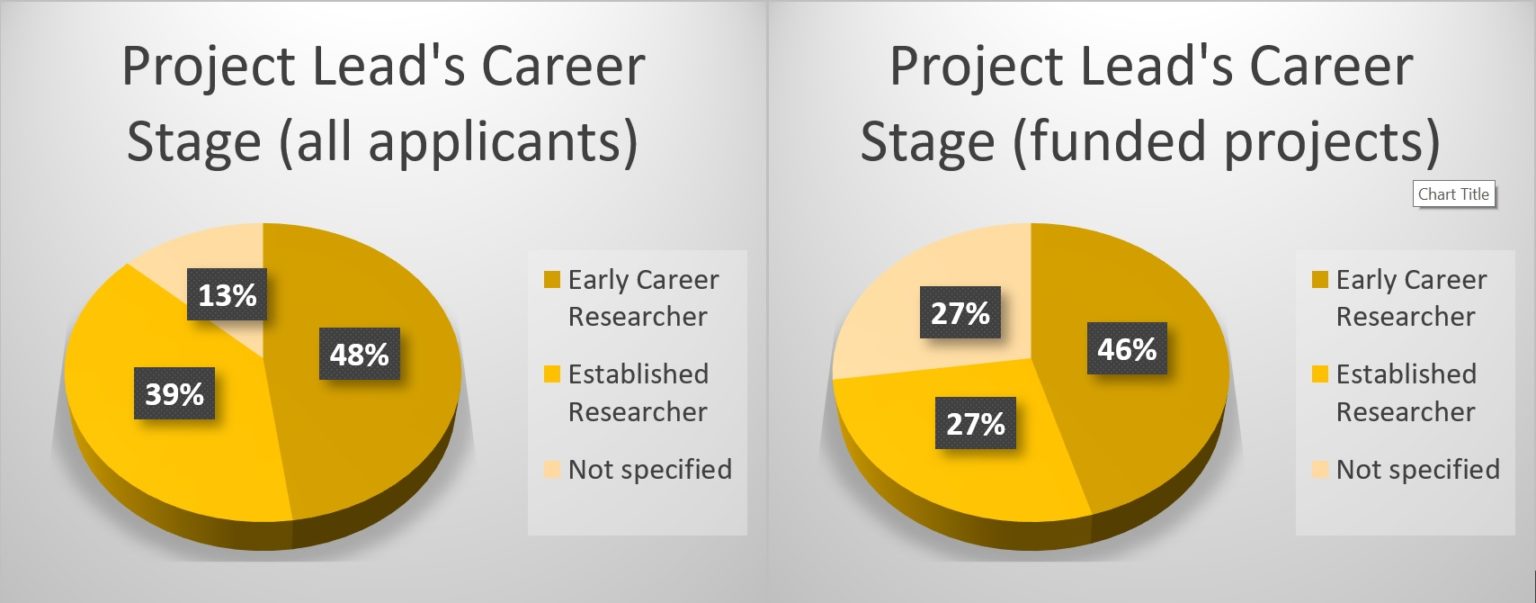
The funding call did not favour established or more senior researchers; however, the call was not only shared with researchers but practitioners, activists, and artists. Hence, some applicants might not identify as ‘researchers’ which might have distorted responses with regards to their level of seniority. As a relatively small budget call, the opportunity may have been better suited to young professionals. Similarly, the offer of a digital mentoring program for all funded projects to share research approaches, project management, and learning with each other might have been more inviting for less established researchers.
The Gender makeup of the project teams is as follows: 46 researchers identified as female, 27 as male, one as other; two projects left the category blank. Of the projects selected for funding, 24 researchers identified as female, 13 as male; one project left the category blank. This shows that the funding decision ratios mirror the applications received, as well as that, considering the gender make-up of researchers working in humanitarian protection, disproportionately many female-identifying researchers applied, which may be due to Rights for Time being a feminist, female-led network and the call being circulated among similarly positioned organisations and networks.
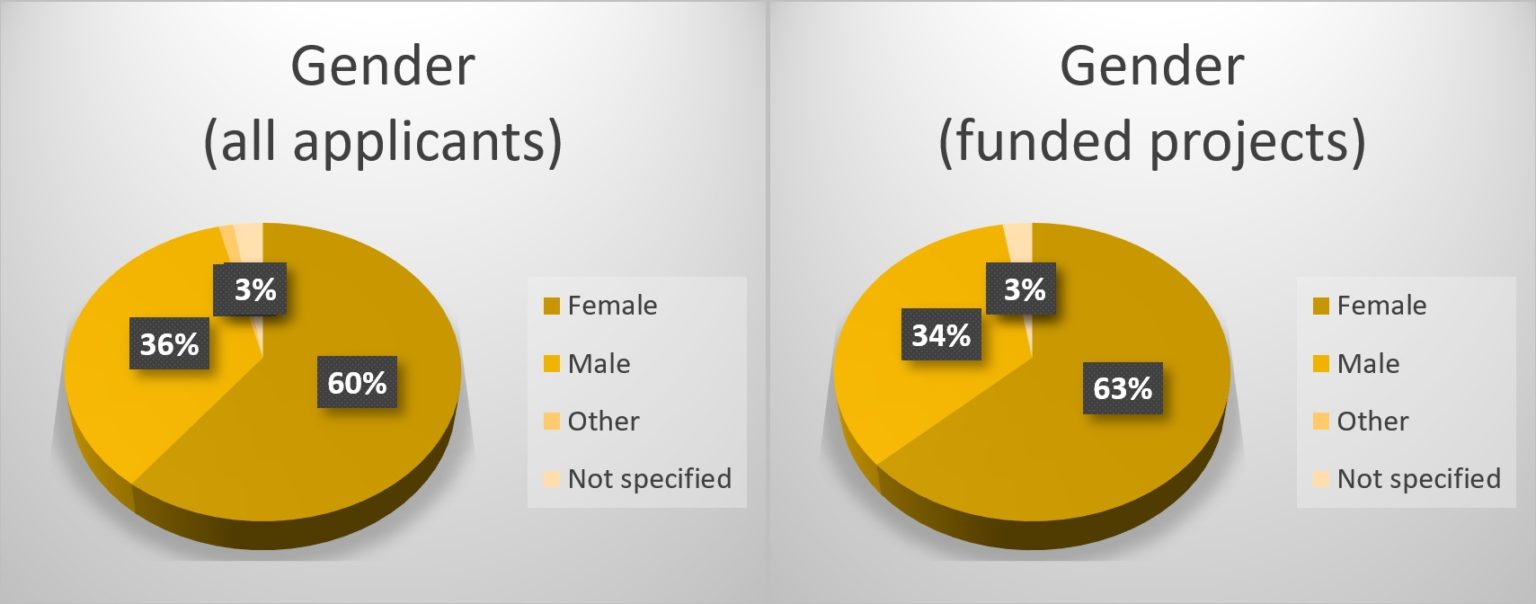
A total of ten projects indicated that at least one of their members was part of a racialized or minoritized group in the national context, eight declared that none of their members identified as such and five projects left the question blank. Of the funded applications, six applications identified at least one member as part of a racialized or minoritized group, one declared that none of their members identified as such, and three did not disclose the information.
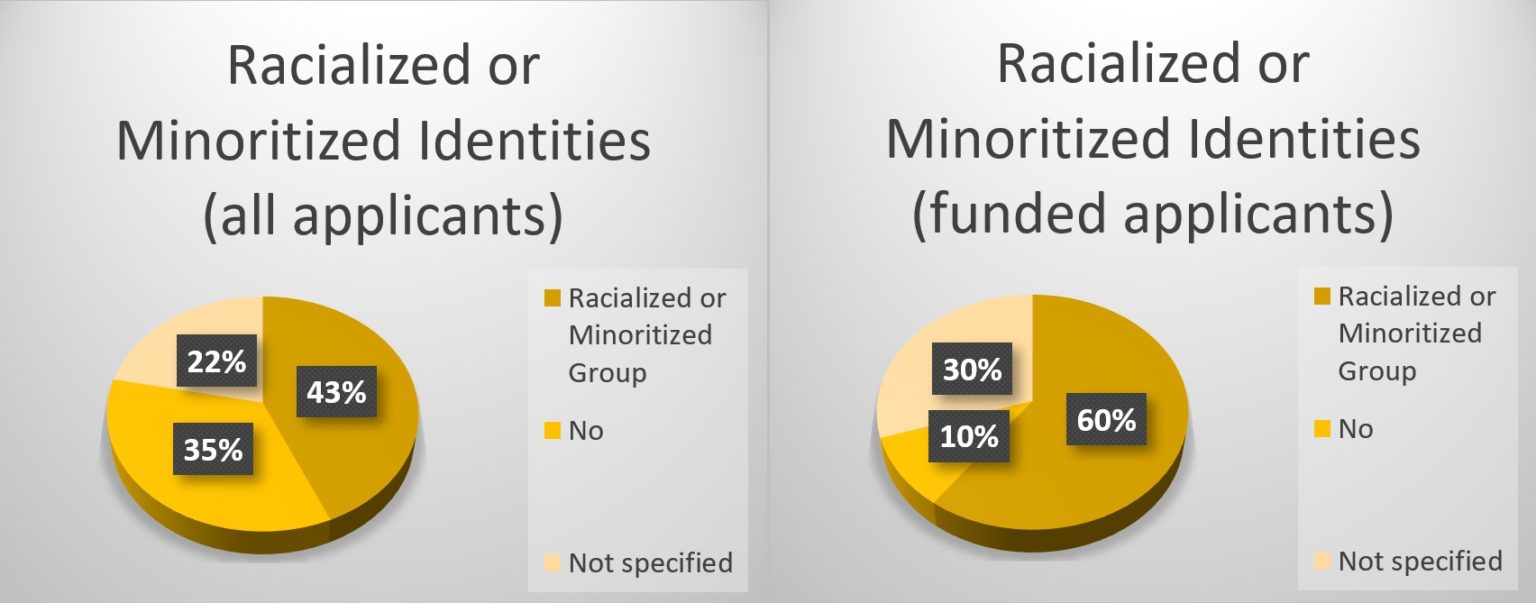
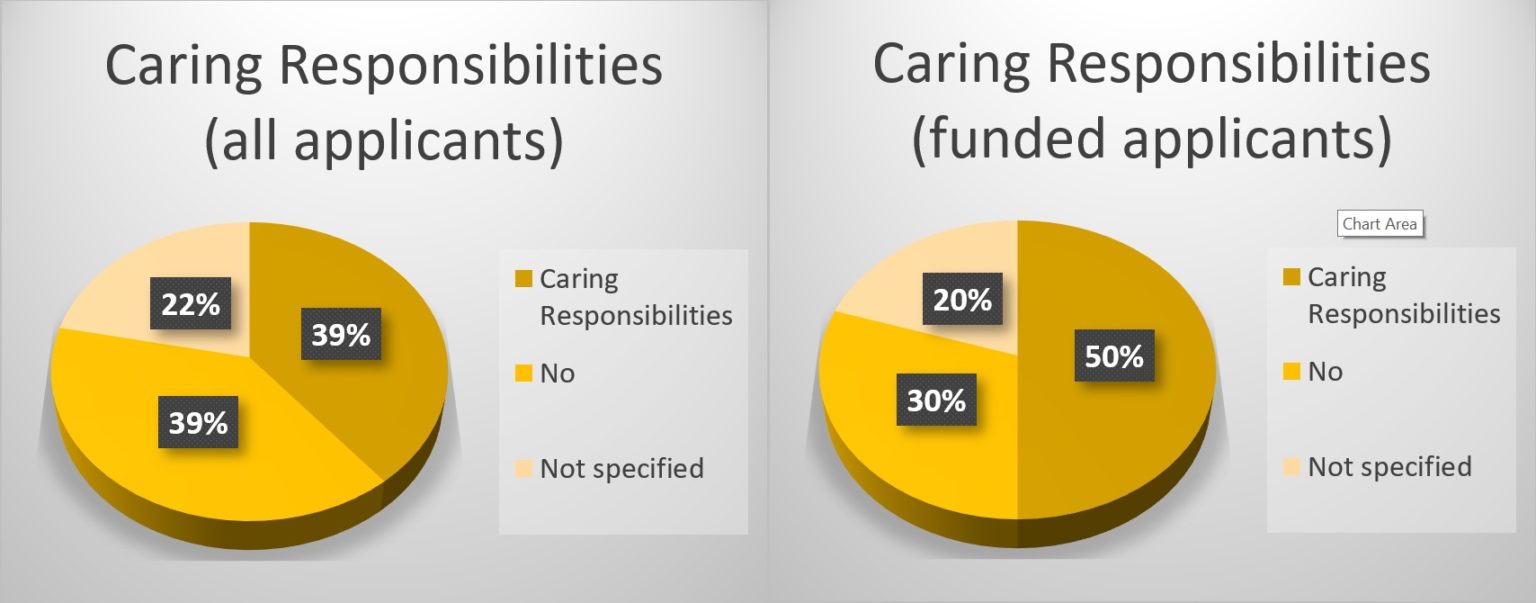
Our Learning
The Rights for Time team is highly aware of the impact of funding decisions on diversity and representation in our research area, and acknowledges that it is our responsibility to address barriers to participation. We also recognize that some of the issues that Rights for Time seeks to address in its work–the limitations of the ‘crisis’ approach to protection efforts–are exacerbated by the process of international funding requirements, processes, and frameworks. Making data on applications and awards publicly available is important as part of our aim for a more equitable funding landscape; it also offers us the opportunity to reflect on if/how we managed to mitigate some of the limitations that international funding puts on the possible challenges to its own frameworks (which we seek to do). Making this data publicly available, along with this reflection on process, is, we hope, another step toward ensuring applicants and funders a fair and transparent selection process, and information on how funding processes might better be run in the future. In this report, we have reviewed and examined our processes. We will now share our lessons learned, address our shortcomings, and discuss where our data indicates underrepresentation or disadvantage.
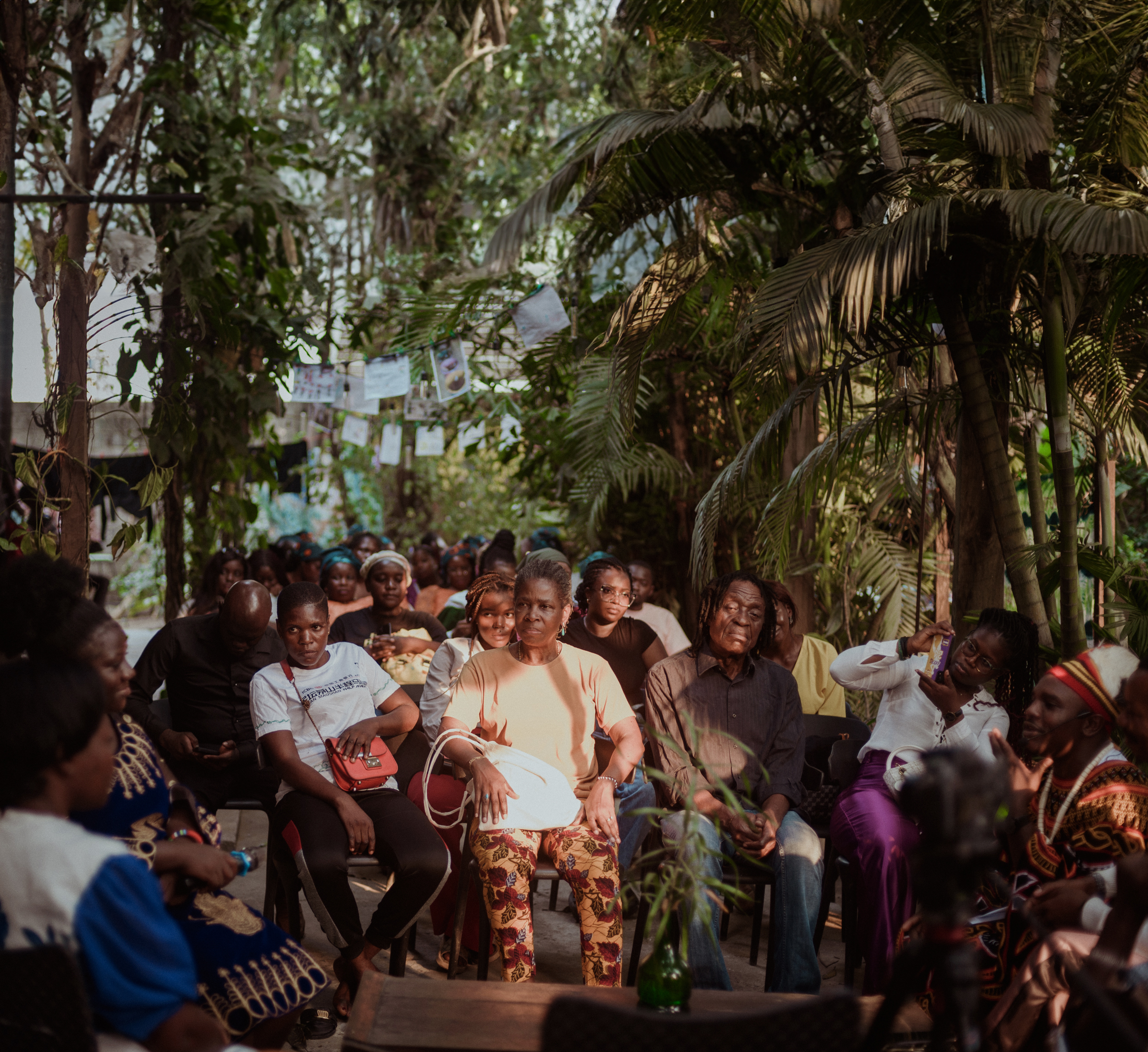
Linking in with Rights for Time Concepts
The network’s concepts and foundational principles are challenging and can be difficult to engage with. Concepts are abstract and can be quite wide in scope. We hoped at once to reach projects and people that challenged in ways we hadn’t yet thought of, the intersections of time, trauma, and protection, but at the same time required that applicants explain the relationship between their work and ours.
Difficulties here were seen when evaluating the fit with network aims. For example, several of the applications we received were not funded because they were: thematically out of scope; did not propose work taking place in a low-or middle-income country; did not include an ‘ethical budgeting’ plan; or did not propose to work with grass-roots organisations or movements. Many projects struggled to consider the network’s themes and link their work to the impact of time on violence, trauma, and harm that is at the heart of the Rights for Time research. There was also an uneven playing field in a sense, as some applicants had been involved with our network for years, and were familiar with our concepts, while others had only come across our work through the funding call. To mitigate these issues, we ran information sessions designed to assist projects in developing their proposals in line with the network’s themes and values. We ran these in English and Arabic. Our co-Investigators also made themselves available to applicants to provide feedback on specific questions. Despite being well advertised, these sessions were not well attended, nor did some of the project applicants reach out to Network members. This might explain why some projects struggled with making the relationship between their work and ours more clear. To mitigate this we are operating a two-step system for our current funding call. Here we have run a call for Expressions of Interest, so that applicants can be given formal feedback before full applications are solicited.

Deadlines and Extensions
As we got closer to the application deadline, more applicants reached out for information. We hoped to solicit a good pool of high-quality applications, and therefore extended the deadline. This frustrated some applicants who submitted on time, made some feel they were disadvantaged because they would have benefitted from extra time, and made some communication elements less clear than they might have been. While extending funding deadlines is a common practice, we have learned that to maintain fairness, individuals who have already applied should be contacted and given the opportunity to amend their applications if/when calls are extended. Our two-step call process outlined above, should also mitigate this issue.
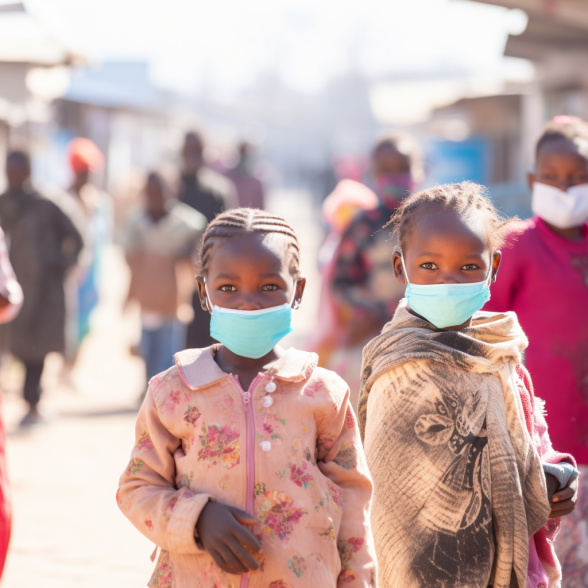
Project Partner Advantage/Disadvantage
Because one of the most significant barriers to funding was the communication of fit with the network, existing project partners may have had an unfair advantage. At the same time, given mutual familiarity, and given evaluation criteria (external reviewers, strict criteria, no use of external knowledge, declaration of conflicts of interest) some project partners may have presumed an understanding of the connection between proposed projects and the network, and were not funded. In an attempt to run a fair and transparent process, existing partners were considered in the same pool as external applicants. This frustrated partners who put time and energy into the network before the call was released. We learned that expectations around the application should have been made clear for all partners at an earlier stage, and that partners should have been more explicitly made aware that their applications would be evaluated entirely on the basis on the application made.
As part of a limited mitigation strategy prepared before the applications were evaluated, the panel committed to providing feedback from the review process, and to offer non-financial assistance to projects that were not funded (digital mentorship program).
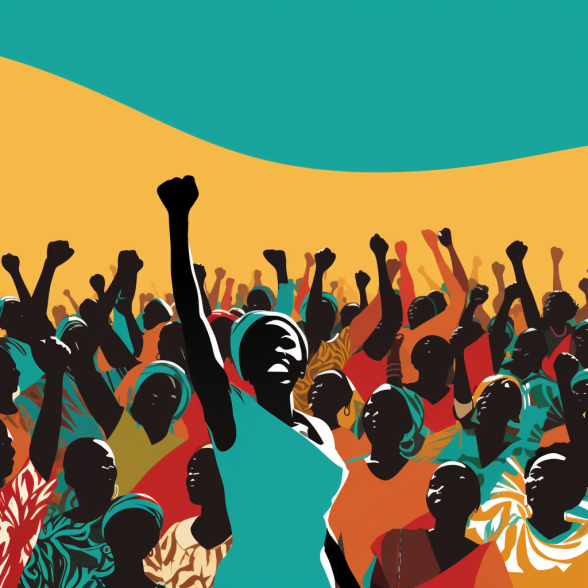
Barriers to Access
We have documented our learning with regards to access and participation of the call. Our objective is to bring a wide range of people together and create meaningful opportunities to engage, listen, respond, and create effective solutions to long-standing inequalities. The funding call ran in Arabic and English which encouraged applications from the Arab world. While Rights for Time has a number of projects in the Middle East and circulated the call among partners in this region, not running the call-in other languages closed it off against projects in other areas, and relatedly, we might have seen less interest in the funding from teams in South America, parts of Africa and Southeast Asia. Running the call in additional languages might have prevented that and led to a more ethnic and cultural diverse pool of applicants.

Budget Cuts
The network continues to face challenges due to budget cuts, the impact of covid-19, as well as the bureaucratic structures of funders and universities who occasionally fall short of placing the individual at the centre of their processes. As such, we often have to move quickly in initiating calls and spending funds while also having to navigate hurdles around due diligence, research risks and other documentation that slow us down and pull us in multiple directions. For instance, while the responsibility to check documents provided by applicants lies with the university, our administrator spent weeks chasing admin staff for signatures and assisting with arranging translators to interpret documents on behalf of the funded applicants. These insufficiencies are not caused by the network yet might be perceived as such.

As an interdisciplinary, cross-sectoral, and cross-cultural network, we aim to ensure that equality and diversity are not afterthoughts in commissioning research but consider them central to supporting research that includes and benefits marginalised communities. Similarly, we expect funded projects to consider those values in their work and will engage in mentoring and development opportunities to facilitate bi-directional learning between the network and its partners. In issuing this call and reviewing applications, we were as ethical, equal, and fair as possible; yet, we are hoping that our new partners will deepen and strengthen our understanding of what this vision means and welcome feedback from all partners on how to improve our commissioning and create a research landscape where everyone has an equal opportunity to contribute and benefit. You can reach us here.